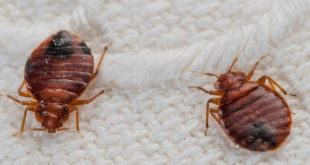Termites are among the most destructive pests that can invade a home, causing extensive and often hidden damage. These tiny insects feed on wood and other cellulose-based materials, and if left unchecked, their presence can result in significant structural damage. When it comes to repairing termite damage, it’s crucial to hire a competent and reliable termite damage repair contractor. This guide will walk you through everything you need to know about finding and working with a termite damage repair contractor to ensure your home is restored to its original condition.
Understanding Termite Damage
Before diving into the specifics of hiring a contractor, it’s important to understand what termite damage entails. Termites primarily feed on wood, which means they can compromise the structural integrity of a building. Common signs of termite damage include:
Hollowed Wood: Termites create tunnels within wooden structures, leaving them hollowed and weakened.
Bubbling Paint or Wallpaper: Damage can also affect the appearance of walls, causing paint or wallpaper to bubble or peel.
Mud Tubes: Subterranean termites build mud tubes to travel from their colony to their food source.
Frass: Termite droppings or frass, which looks like sawdust, may be present near the affected areas.
Termite damage can be extensive, affecting not just wooden components but also insulation, drywall, and even the foundation of your home. The severity of the damage determines the extent of the repair work needed.
Choosing the Right Termite Damage Repair Contractor
Selecting the right contractor for termite damage repair is crucial to ensure quality work and avoid future issues. Here are some key factors to consider when choosing a termite damage repair contractor:
Experience and Expertise
Look for a contractor with extensive experience in dealing with termite damage. An experienced contractor will have a thorough understanding of the various types of termite damage and the most effective repair methods. Check their portfolio or ask for case studies of previous work to gauge their expertise.
Licensing and Certification
Ensure the contractor is licensed and certified to perform termite damage repairs. Licensing requirements vary by state, but a reputable contractor should have the necessary credentials to prove their qualifications. Certification from professional organizations, such as the National Pest Management Association (NPMA), can also be an indicator of a contractor’s professionalism and adherence to industry standards.
Insurance
Verify that the contractor has adequate insurance coverage, including liability insurance and worker’s compensation. This protects you from potential liability if an accident occurs during the repair process and ensures that the contractor’s workers are covered in case of injury.
Reputation and Reviews
Research the contractor’s reputation by reading online reviews and asking for references from past clients. A reliable contractor will have positive feedback and a track record of satisfied customers. You can also check with the Better Business Bureau (BBB) to see if there have been any complaints or disputes.
Detailed Estimates
Request detailed written estimates from multiple contractors. The estimate should include a breakdown of labor, materials, and any additional costs. Comparing estimates will help you understand the average cost of the repair and avoid overpaying.
Repair Methodology
Inquire about the repair methods the contractor plans to use. Different contractors may have varying approaches to termite damage repair, including:
Structural Repairs: Replacing or reinforcing damaged wood, repairing foundations, and fixing structural issues.
Treatment Options: Using chemical treatments or baiting systems to eliminate remaining termites and prevent future infestations.
Preventative Measures: Implementing measures to prevent future termite problems, such as moisture control and regular inspections.
The Repair Process
Once you’ve chosen a contractor, the repair process typically involves several key steps:
Inspection and Assessment
The first step is a thorough inspection of the affected areas. The contractor will assess the extent of the damage, identify any underlying issues, and determine the best course of action. This may involve removing drywall or other coverings to fully evaluate the damage.
Termite Treatment
Before repairs can begin, any remaining termites must be treated to prevent further damage. The contractor may use chemical treatments, baiting systems, or other methods to eliminate the infestation. It’s essential to ensure that the treatment is effective and that any termites present are completely eradicated.
Repairs and Restoration
Once the termites are eliminated, the contractor will proceed with the necessary repairs. This may involve replacing damaged wood, repairing structural components, and restoring affected areas to their original condition. The contractor should keep you informed throughout the process and address any concerns you may have.
Final Inspection
After the repairs are completed, a final inspection is conducted to ensure that all work meets quality standards and that the home is free of termites. The contractor should provide you with a detailed report of the repairs and any recommendations for future maintenance.
Preventing Future Termite Infestations
To protect your home from future termite infestations, consider implementing the following preventative measures:
Regular Inspections: Schedule regular inspections by a pest control professional to catch any potential termite issues early.
Moisture Control: Keep your home’s moisture levels in check, as termites are attracted to damp environments. Fix any leaks and ensure proper drainage around your home.
Proper Ventilation: Ensure adequate ventilation in areas prone to moisture, such as crawl spaces and basements.
Termite Barriers: Consider installing termite barriers or treatments to protect your home’s foundation and prevent termite entry.
Conclusion
Repairing termite damage requires expertise, precision, and attention to detail. By choosing a qualified and experienced termite damage repair contractor, you can ensure that your home is properly restored and protected from future infestations. Remember to consider factors such as experience, licensing, insurance, and reputation when selecting a contractor. With the right professional on your side, you can confidently address termite damage and maintain the structural integrity and value of your home.
 Daily Blogger News Stay updated with the latest trends and insights. Your reliable source for daily updates and information.
Daily Blogger News Stay updated with the latest trends and insights. Your reliable source for daily updates and information.







